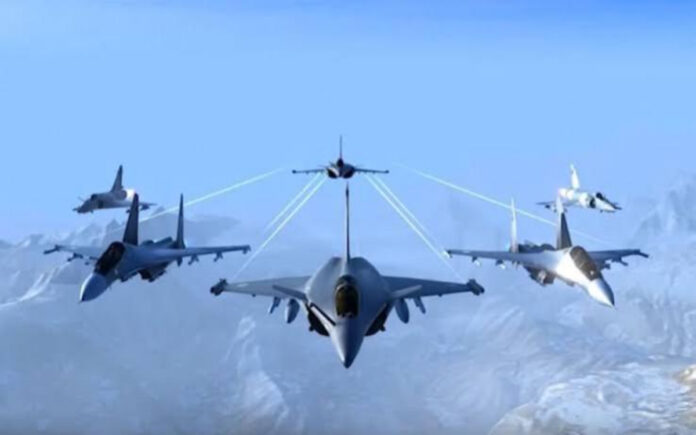New Delhi: India’s Operation Sindoor on May 10 saw the Indian Air Force (IAF) deliver a powerful aerial strike across the border, reportedly destroying multiple high-value Pakistani military assets, including advanced fighter jets, transport aircraft, and radar systems, according to a report by the Indian media outlet Hindustan Times citing Indian defense officials.
Indian Missiles Hit Targets 315 km Inside Pakistan
At the heart of the operation was a precision strike that destroyed a Pakistani SAAB-2000 airborne early warning and control system (AWACS) aircraft flying approximately 315 kilometers inside Pakistani territory. The deep-penetration strike marked one of the most extensive air campaigns undertaken by the IAF in recent years.
Indian defense sources cited in the report confirmed that alongside the SAAB-2000, the IAF also shot down a C-130J medium-lift military transport aircraft, one JF-17 Thunder fighter, and two F-16 fighter jets. These aerial targets were engaged both in flight and on the ground, according to the report.
Limited Response Under Operation Bunyan al-Marsoos
Pakistan’s response, codenamed Operation Bunyan al-Marsoos, was launched at 1:00 AM on May 10 with an intended 48-hour campaign to strike Indian airbases. However, the retaliation reportedly collapsed within eight hours. Indian airstrikes, deployed from Rafale and Su-30MKI fighter jets using SCALP and BrahMos cruise missiles, are said to have effectively disrupted Pakistani plans and neutralized operational command centers.
By 9:30 AM on May 10, Pakistan was said to have reached out to the United States, requesting mediation and a ceasefire, according to individuals familiar with the developments.
S-400 Air Defense System Activated Multiple Times
India’s deployment of the Russian-built S-400 air defense system played a significant role during Operation Sindoor. Based in Adampur, the system was activated 11 times, with at least one confirmed kill — the Pakistani SAAB-2000 AWACS — hundreds of kilometers inside enemy airspace.
Also Read | Greenhouse Gas Rules Could Be Scrapped for Power Plants Under EPA Proposal
Strikes on Key Pakistani Air Bases
Initial IAF strikes reportedly neutralized the Northern Air Command and Control network at Nur Khan Airbase in Chaklala. Later waves of attacks were directed at Pakistan’s Jacobabad and Bholari airbases. By this phase, Pakistan had ceased active engagement and was reportedly pushing for de-escalation.
Neutralization of Air Defense Systems
In a decisive move, the IAF deployed HARPY kamikaze drones to destroy a Chinese-origin LY-80 air defense system stationed in Lahore. Additionally, Indian missiles took out an HQ-9 surface-to-air missile system — China’s equivalent of the Russian S-300 — located in Malir, Karachi.
Also Read | Enhanced Games’ Prize Money Sparks Controversy Over Athlete Health and Doping
Pre-Operation Strikes Targeted Terror Camps
Operation Sindoor followed a May 7 offensive where Indian forces targeted nine terrorist camps across the border. Seven of these were struck using loitering munitions in coordinated attacks by the Army, Air Force, and Navy. High-value terror camps in Muridke and Bahawalpur were hit with SCALP and BrahMos missiles in precision strikes.
Indian Navy’s Strategic Posture
Simultaneously, the Indian Navy maintained a strike-ready position with warships stationed 260 nautical miles off the Makran Coast. A planned offensive on the Karachi Naval Port was later withheld after Pakistan’s Director General of Military Operations (DGMO) reportedly requested a no-fire pact later that day.



